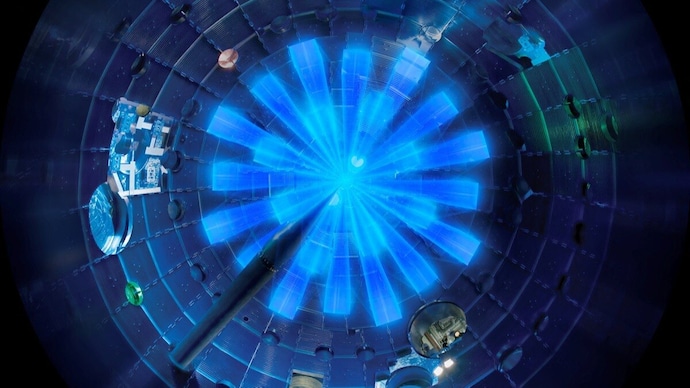US scientists repeat fusion ignition, recreate process that powers the Sun
That experiment briefly achieved what's known as fusion ignition by generating 3.15 megajoules of energy output after the laser delivered 2.05 megajoules to the target, the Energy Department said.

In Short
- The first successful fusion ignition was achieved on December 5
- Scientists demonstrated a net energy gain in a fusion experiment
- Fusion powers the sun and stars
US scientists at the Lawrence Livermore National Laboratory (LLNL) in California have achieved net energy gain in a fusion reaction for the second time since December 2022.
The announcement marked another crucial step towards the long-sought goal of harnessing fusion power.
The experiment was conducted at the National Ignition Facility (NIF), where researchers used lasers to fuse two light atoms into a denser one, releasing energy.
This process, known as fusion ignition, resulted in an energy output of 3.15 megajoules after the laser delivered 2.05 megajoules to the target. In simpler terms, the experiment produced more energy than it consumed, a feat that has been elusive in fusion research for decades.
The first successful fusion ignition was achieved on December 5, 2022, when LLNL scientists demonstrated a net energy gain in a fusion experiment using lasers.
This historic achievement was hailed by the US Department of Energy as a "major scientific breakthrough decades in the making," paving the way for advancements in national defense and the future of clean power.
Fusion power, which powers the sun and stars, has been pursued by scientists for nearly a century due to its potential to provide vast amounts of clean energy. Unlike nuclear fission, which splits atoms to create energy and leaves behind radioactive waste, fusion merges atoms together, creating energy without harmful byproducts or the risk of meltdown. Moreover, the fuel for fusion is abundant and easily accessible, as it can be found in seawater.
While this recent achievement marks a significant milestone in fusion research, scientists caution that there is still a long way to go before fusion power can be commercially viable. The current experiments can only be conducted about once a day due to the need to cool the lasers and replace the fuel target. A commercially viable fusion plant would need to perform this process several times per second.
Despite these challenges, the repeated success of achieving net energy gain in fusion reactions brings us one step closer to realizing the dream of limitless, clean energy. As research continues, the hope is that fusion power will play a pivotal role in curbing climate change and powering our future.

